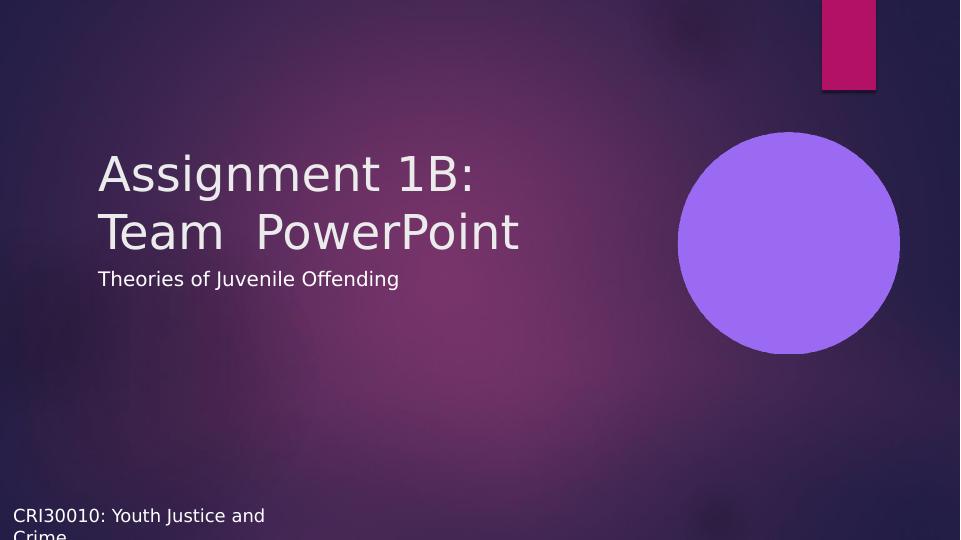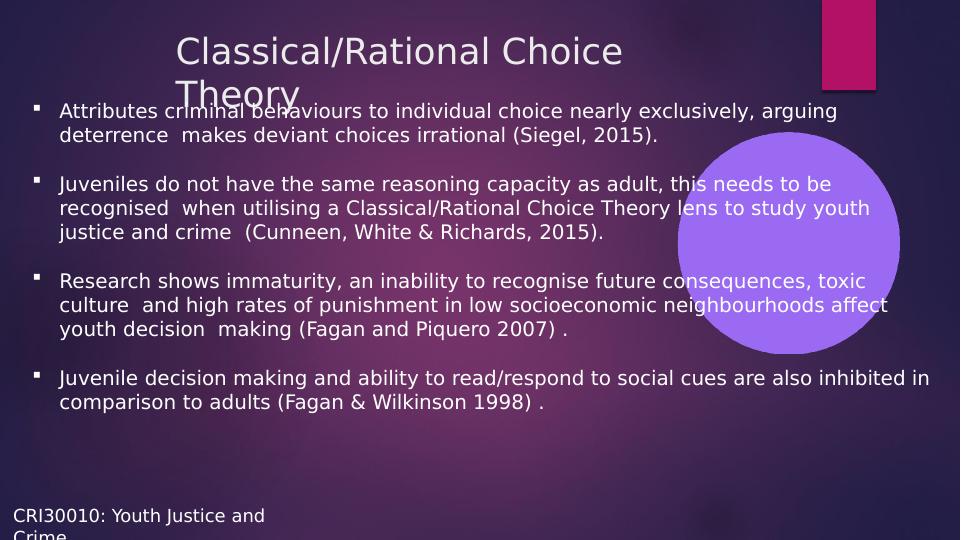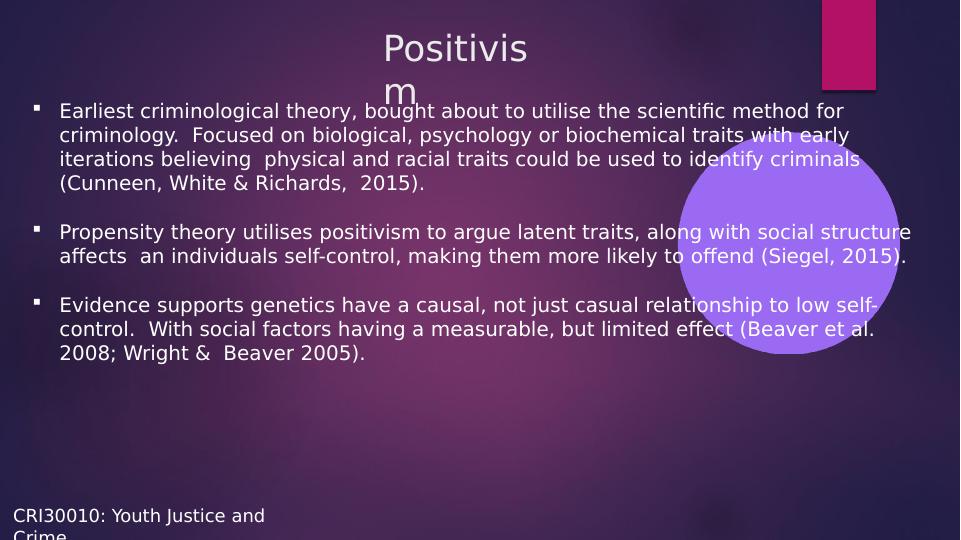Theories of Juvenile Offending
This assignment requires the creation of a team PowerPoint presentation on the theories of juvenile offending, focusing on individual, social, and structural factors. The presentation should include an introduction to juvenile offending in Australia, classical theories, deterrence, and positivism. The assignment is worth 10% of the final grade and is due on April 8, 2019.
Added on 2023-04-19
About This Document
Theories of Juvenile Offending
This assignment requires the creation of a team PowerPoint presentation on the theories of juvenile offending, focusing on individual, social, and structural factors. The presentation should include an introduction to juvenile offending in Australia, classical theories, deterrence, and positivism. The assignment is worth 10% of the final grade and is due on April 8, 2019.
Added on 2023-04-19
End of preview
Want to access all the pages? Upload your documents or become a member.



